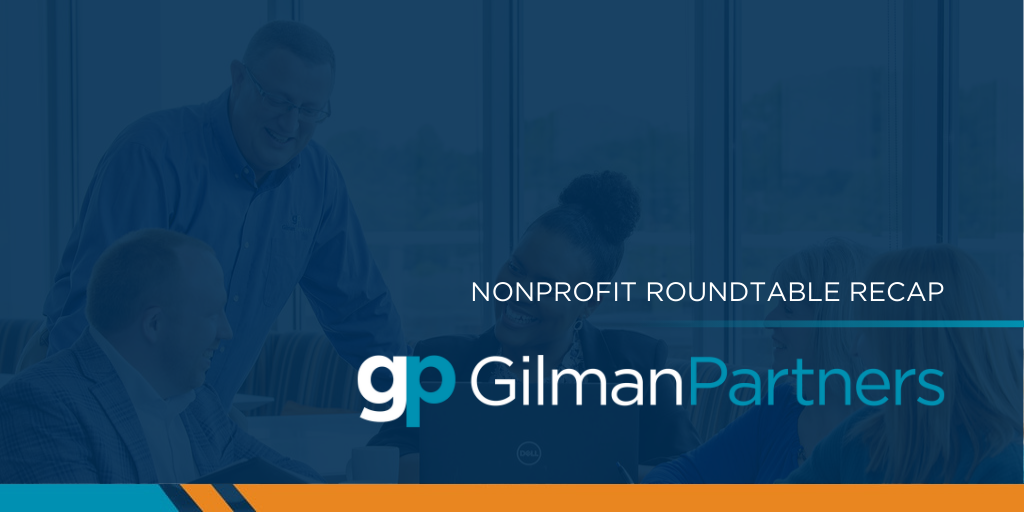Gilman Partners hosted its annual roundtable discussion on nonprofit succession planning for key leadership roles. A panel of executives and board leaders led the conversation and engaged attendees in a thoughtful discussion:
- Mike Dunn (CEO) – Meals on Wheels
- Laura Lamb (President & CEO) – Episcopal Retirement Services
- Albert Smitherman (Chair) – Episcopal Retirement Services
- Liza D. Smitherman (Board Chair) – Cincinnati Children’s Hospital Medical Center
- Mary Wagner (Board Vice Chair) – Meals on Wheels
Here are some of the key takeaways from the conversation.
Prioritize Succession Planning
If you ignore succession planning until the day someone puts in their notice you’ve lost the opportunity to intentionally create a more seamless transition. Think beyond the Executive Director/CEO role and have a plan for every key role in your organization – even if it’s just who will do the work in the interim – and update your plan regularly. As one panelist said, “The day you step into a new leadership role you should be thinking about who might someday replace you.” Don’t forget to apply this concept to your board positions and leadership roles, too.
Value Transparency
Too often, succession is considered a sensitive—almost secret—topic. One panelist suggested nuance is needed and underlined the power of adopting a culture of candidness. Leaders should engage in direct, authentic conversations and position succession as a reality that allows organizations continued existence and growth. Understanding employees’ career aspirations and when they plan to step out or back is essential. One panelist suggested creating a venue where these conversations could happen organically, such as regular check-ins with the CEO or Board. And since a nonprofit CEO leadership transition can take up to two years to plan and execute, waiting until a departure is imminent doesn’t set an organization or its team up for success.
Develop Leaders
All the panelists agreed there’s value in leadership development, whether or not it results in succession for your own organization. Creating growth opportunities at all levels will help boost retention rates and adds to the talent in the Greater Cincinnati nonprofit ecosystem.
One panelist said teams need to know you care about their development. This may include exposure to education, leadership development programs, training mentorships, or stretch assignments. Have future-focused conversations to ensure a team member’s intended career trajectory matches your vision and be transparent that there are no guarantees. No matter the outcome, you are still creating better skill sets. One panelist also noted that once you develop leaders who are ready to step up you need to get out of the way, even if it’s hard. “If you don’t activate the next generation,” he said, “they’re going to leave.” This doesn’t necessarily mean you have to leave the organization, but perhaps you can create a role that provides additional opportunities for the next leader(s).
Assess Talent, Inside and Out
Not all organizations are large enough to have a deep internal talent bench. And in other cases, your Board might decide the organization needs a leader with a different set of skills or vision to match future needs. In these instances, it’s important to assess talent outside your organization and then be intentional in developing relationships with them. Find opportunities to engage them in projects or committees or even as a member of your Board. Evaluate capability and potential availability and keep tabs on their career progress. The time this takes could pay dividends.
One panelist puts high achievers – both those inside and outside of the organization – in charge of key events and projects and then asks:
- How do they handle asset allocation?
- How do they engage others to support their efforts?
- How do they delegate responsibility?
- What leadership skills do they possess?
- How do they respond under pressure?
The roundtable panelists concluded that when leadership is relationship-driven and intentional, succession planning transforms from the elephant in the room to a necessary, transparent, and even exciting process that can help a nonprofit organization thrive for years to come.



